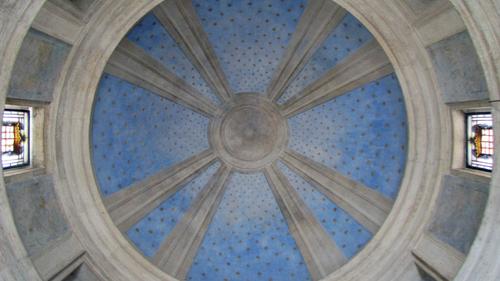Being in a building

Rome’s Tempietto should be a full-body experience. One of the great buildings of the Renaissance reminds us that these are made to be explored, smelled and even tasted. David Karmon, a professor of history, argues that we need to reconsider this masterpiece of High Renaissance architecture by using a variety of sensory experiences that would have been used by 16th-century visitors. Here he explores how the Tempietto can be seen as an object defined to stimulate the senses in a range of ways that can create a host of experiences beyond our expectations. “By beginning to reconstruct other ways of knowing this architecture, we can begin to recognise how even a visual icon like the Tempietto offers more than just a feast for the eyes, and instead is capable of creating an infinite variety of lived interactions.”
From Aeon